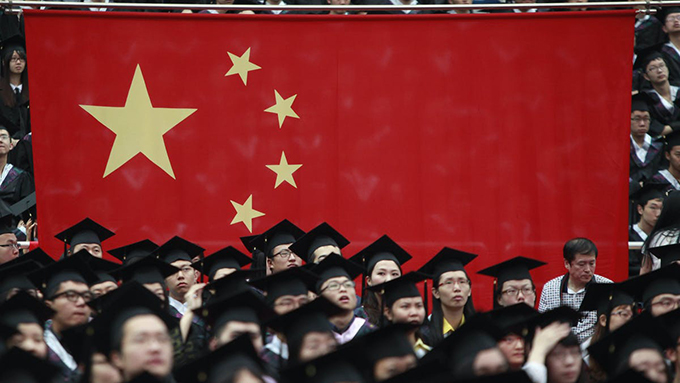
The series of measures that China has launched to protect graduates against the worst economic consequences of the Covid-19 epidemic include a significant expansion of postgraduate enrolment. But while 189,000 extra places might be good news for candidates competing for a place this year, it has triggered concerns in China about the possible devaluation of postgraduate degrees.
There is no doubt of the economic case for the expansion given the state of the jobs market facing the 8.74 million students who are expected to graduate from Chinese universities this year. The lockdowns have halted industrial production, frozen recruitment plans and resulted in staff cuts, particularly in SMEs. According to the National Bureau of Statistics of China, the urban unemployment rate in February – the height of the epidemic in China – was 6.2 per cent, 0.9 percentage points up on the previous month.
Moreover, the increasing demand for talent in high-tech industries calls for enrolment expansion in related subjects. In line with national strategy, it is reported that this round of expansion will focus on advanced practical training in clinical medicine, public health, integrated circuits, artificial intelligence and other disciplines in which professionals are in short supply.
Additionally, it is worth noting that the proportion of postgraduate degree holders in the overall Chinese population is much lower than in developed countries. Statistics from 2017 reveal that postgraduate degree-holders account for only 0.6 per cent of the population, whereas the US has reached 13.1 per cent.
However, many people believe that the flood of new postgraduate degrees will devalue these qualifications. From 2008 to 2018, the number of graduate students that were enrolled in China rose from about 390,000 to more than 760,000, while the number of applicants also surged from 1.2 million in 2008 to 3.4 million in 2019. So the “scarcity value” of postgraduate degrees has already been reduced.
This, in turn, has contributed to inflation in employers’ demands. According to the Report on Graduate Recruitment and Incentives 2019, 57 per cent of Chinese companies tend to recruit graduates from key domestic universities, and 12 per cent choose to recruit graduates from well-known overseas universities. State-owned companies pay special attention to degrees, with 75 per cent now requiring a master’s degree and 25 per cent a PhD.
One category of postgraduate degree that might be thought to be in particular demand from employers is the professional master’s, invented in China in 1991 and focused on nurturing practical talents. However, concern about quality is particularly marked regarding these courses. Critics call them “old wine in new bottles” because they allegedly fail to differentiate themselves from the traditional academic master’s. Some universities treat professional master’s students as cash cows, seriously deviating from the qualification’s original goal to boost employability.
One factor that should not be ignored is that of falling staff-student ratios. In 2017, for example, there was a surge of 22.5 per cent in graduate student admission, but the growth rate of tutors was only 6 per cent. The average Chinese academic already supervises seven master’s students, on top of all their undergraduates and PhD students. Some studies even indicate that it is common to see mentors supervising 20 to 30 students; one apparently had to supervise more than 100 doctoral and master’s students.
Chinese universities must optimise their professional master’s programmes to integrate learning, research and knowledge transformation, so that they fulfil the original aim of instilling both academic training and professional skills. And the country’s educational authorities must link the expansion of postgraduates enrolment to a proportionate growth of the number of tutors.
The reforms must also be sensitive to the circumstances of different subjects and kinds of universities. What makes sense for research intensives may well differ from what is good for universities of applied science.
Above all, the focus must be on the quality as much as the quantity of Chinese postgraduate provision.
Author Bio: Zhang Ruomei is a research assistant at the Institute of Public Policy, South China University of Technology.